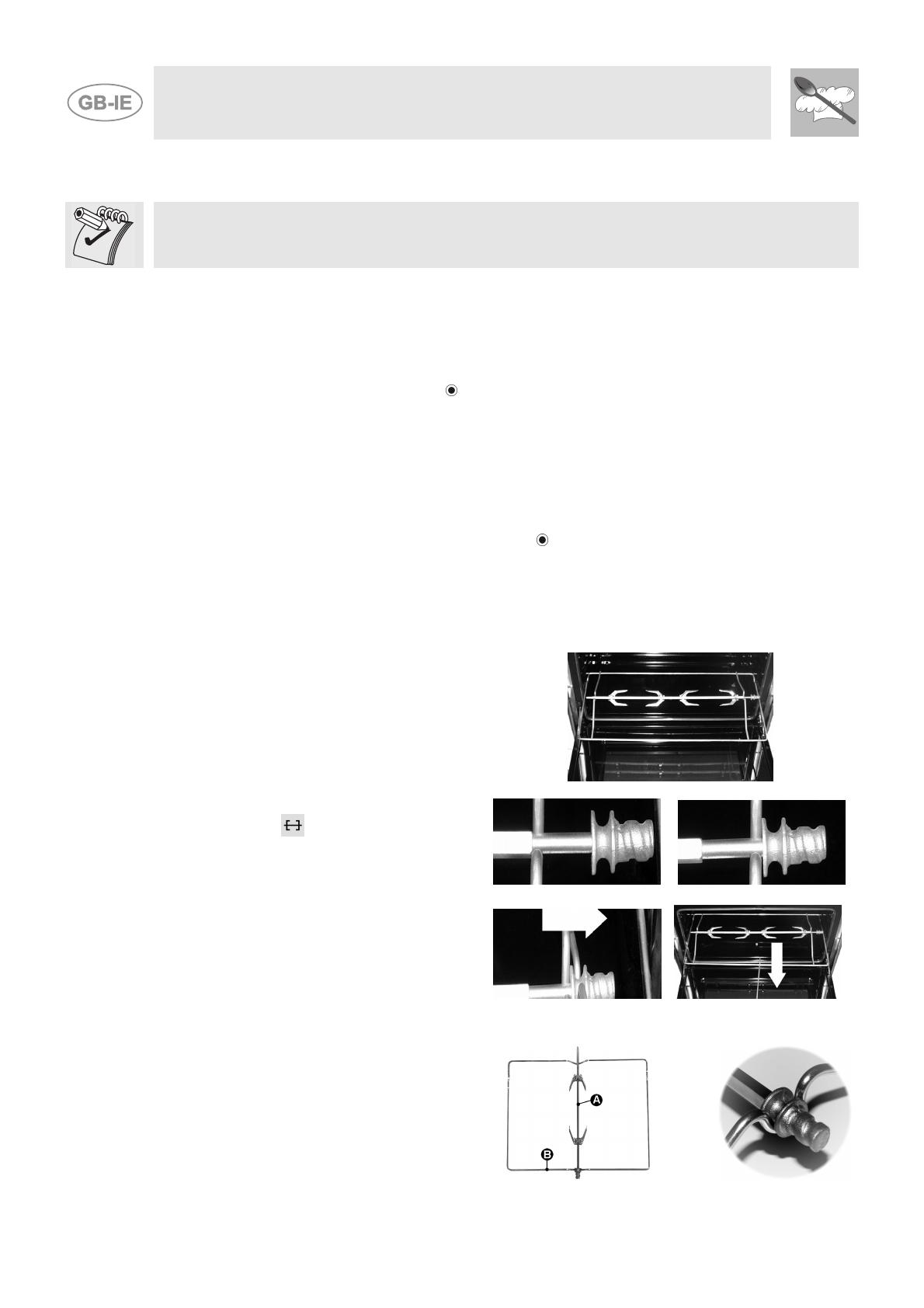
Instruction for the user
20
7.3 Use of the gas grill
While using the oven burner at the same time as the grill, turn on the latter at least 10-15
minutes after the oven.
7.3.1 Electric lighting of the gas grill burner
Having opened the oven door, press the knob and turn it clockwise to the minimum flame setting,
while simultaneously pressing the spark button.
Once the burner is lit, hold the knob down for about 10 seconds. If the burner has not come on by this
time, release the knob and wait for at least one minute before trying again. If the burner accidentally
goes out, turn the knob to the off position (
) and wait at least one minute before lighting again.
During a power cut the burner can always be lit with a match.
7.3.2 Manual lighting of the gas grill burner
Having opened the oven door, press the knob and turn it clockwise to the minimum flame setting,
placing a lit match to the burner on the roof of the oven.
Once the burner is lit, hold the knob down for about 10 seconds. If the burner does not stay lit after
this time, release the knob and wait for at least one minute before trying again. If the burner
accidentally goes out, turn the knob to the off position (
) and wait at least one minute before lighting
again.
7.4 Use of the rotisserie (only on some models)
7.4.1 Using the rotisserie in cookers with maxi oven
Fit the supporting frame onto the second
runner up from the bottom so that the seat
to take the rod projects outside the oven.
Place the rod as shown in the diagram (1)
and push the frame into the oven until the
end of the rod reaches the hole in the
rotisserie motor. Now push the rotisserie rod
to the left until it reaches the position shown
in the diagram (2). To activate this function,
turn the switch to (
).
These operations must be carried out
with the oven switched off and cold.
When cooking is over, use the tool provided
to extract the rod from the hole (3) and
remove the frame (4) to bring the rotisserie
rod out of the oven cavity.
1
2
3
4
7.4.2 Using the rotisserie in cookers with standard ovens
Place the rotisserie frame “B” on the second
runners up from the bottom and insert the rod
“A” in the hole in the back of the oven.



















